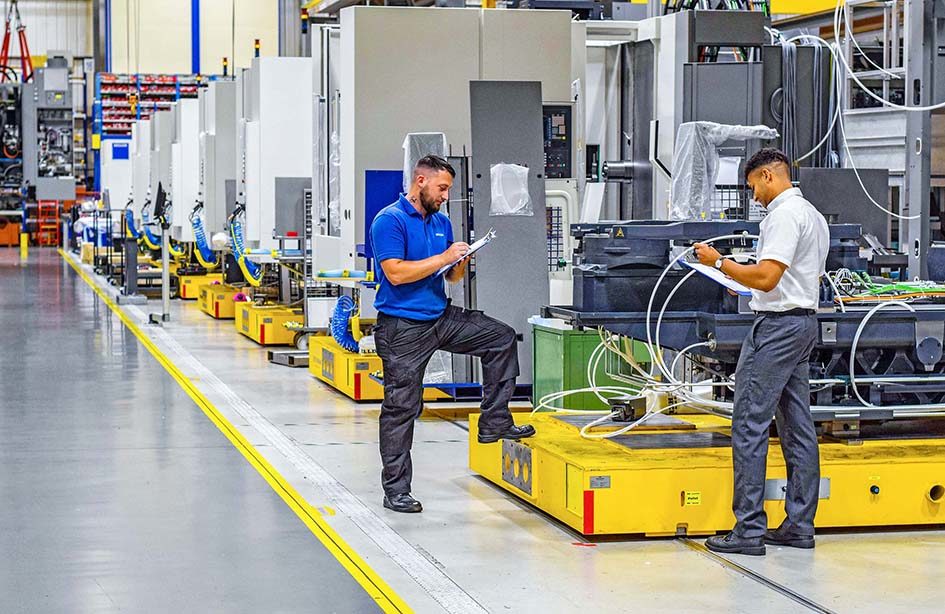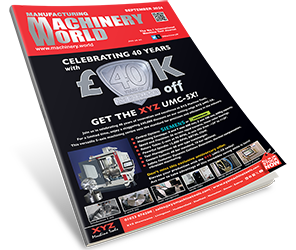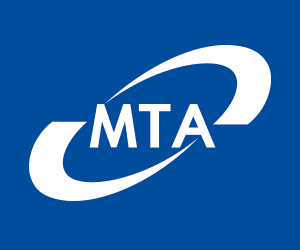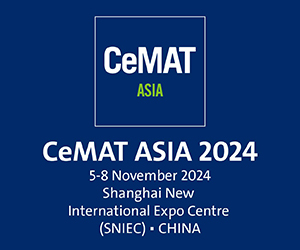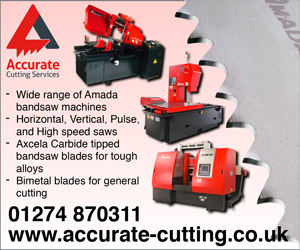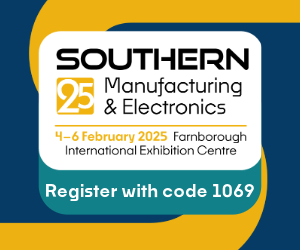German-owned Heller Machine Tools (www.heller.biz/uk), whose factory in Redditch produces selected 4-axis and 5-axis horizontal machining centres (HMCs) for world markets, will show for the first time in the UK on its stand at MACH 2022 (Hall 20, stand 130) the second-generation HF 3500 5-axis model. The company will also feature at the exhibition the fourth generation of its H-Series 4-axis HMCs.
The HF 3500 Gen2, with its 710 x 750 x 710 mm working volume, as well as the larger HF 5500, are available with a fixed table or an automatic pallet changer. Both are built in Redditch and incorporate a multitude of improvements over the previous generation. Both machines are offered with either an HSK-A63 or HSK-A100 tool interface in three versions, POWER, SPEED and the new option of PRO, the latter intended for long periods of simultaneous 5-axis machining.
Designed to raise cutting performance, innovations in the second generation include an approximate halving of the minimum distance between the spindle nose and the centreline of the 225-degree swivelling trunnion; the availability of twin motors and ballscrew drives for moving the trunnion / rotary table assembly in the Z-axis, with position feedback via linear scales; and the offer of six new spindles produced in an automated facility at Heller’s headquarters in Nürtingen.
Other notable improvements include increased stiffness of key components, shorter chips-to-chip times and faster tool change from a chain-type magazine with up to 240 pockets or a rack-type magazine with up to 405 positions. The high-end PRO package additionally offers 10 m/s2 acceleration in X, Y and Z.
The guideways employ linear roller bearings, enabling high dynamics and rapids up to 90 m/min, while the rotary axes have direct drives and stable YRT bearings. There is also increased feed force in the Z-axis, dynamic motors driving the rotary axes and the option of adding a turning function using a high-speed rotary torque table.
Aerospace machining solutions and cutting of difficult-to-machine metals
A particular focus at the show will be Heller’s ability to supply turnkey cells for highly efficient machining of tough titanium and nickel superalloys, notably in the aerospace industry but also in other sectors including oil and gas. In this connection, the machine manufacturer will stress the considerable range of different spindles that it manufactures in-house to suit different applications.
For example, on the HF 3500 there is the new availability of a pair of DC (dynamic cutting) universal direct-drive motor spindles, HSK-A63 / 16,000 rpm / 56 kW / 180 Nm and HSK-A100 / 12,000 rpm / 45 kW / 400 Nm. There is also a PC (power cutting) spindle rated at HSK-A100 / 10,000 rpm / 45 kW / 360 Nm and an HSK-A100 / 13,000 rpm / 45 kW / 228 Nm SC (speed cutting) spindle. Two further spindles with an HSK-A63 interface are rated at 12,000 rpm / 45 kW / 228 Nm (PC) and 18,000 rpm / 45 kW / 103 Nm (SC).
To minimise non-productive times, Heller has succeeded in achieving a big reduction in run-up times for the new spindles, maximum revs now reached in 1.4 seconds for the HSK-A63 variants, 1.8 seconds for HSK-A100. All spindles feature Heller’s Zero-Spindle system for rapid interchangeability, leading to maximum machine availability coupled with low service costs
Tooling is another focus, as Matthias Meyer, Managing Director of Heller Machine Tools explains, “Close collaboration between a machine tool company and a tooling specialist is the only way to really drive forward significant advances in metalcutting that can lead to double-digit increases in productivity, especially when cutting superalloys.
“It is very difficult for either party in isolation to develop solutions that achieve this level of improvement and to answer customers’ questions comprehensively. That is why we have in place strategic partnerships with various tooling suppliers, notably Seco, to identify the best tooling solution for every machine we supply.”
The holistic Heller service includes time studies which are accurate to ± 5 percent, evaluation of requisite workholding, consideration of automation and unmanned running requirements, built-in chillers for cooling the machine elements if they are required to achieve tolerance, tool life monitoring and broken tool detection.
Heller to promote industry 4.0
Featured at MACH 2022 will be Heller4Industry, the group’s worldwide drive towards integration of its machine tools and controls into the Industry 4.0 environment so that its customers can gain maximum advantage from increased productivity and accuracy.
Within the multi-faceted portfolio is HELLER4Operation, an easy-to-use, operator-oriented user interface. Touchscreen controls at the tool and workpiece loading stations promote rapid and easy operation, facilitate the manufacture of individualised products and help to integrate production into the value chain.
The HELLER4Services interface focuses on transparency of digital manufacturing and maintenance. The module forms the basis for evaluating machine data and statistics to reduce downtimes. Additionally, visualisation of specific information such as status displays of axes and spindles enables users to predict wear and implement preventative maintenance to avoid unscheduled downtimes.
HELLER4Performance includes workpiece-specific analysis for optimisation of a process and extraction of real-time data over the internet, plus evaluation and graphical display in the cloud. For example, it could map tool paths and workpiece tolerances during parts of a cycle where tool wear is expected.
That section of the sequence would be simulated on the machine without cutting metal so the paths actually traversed by the tool could be recorded and compared with the workpiece design. The ability of the machine to actually produce the part to the required accuracy could then be determined.
Other innovations within this module include optimisation of cutter positions inside a tool magazine to take into account the next workpiece to be machined, reducing cycle times by up to 20%; and adaptation of workpiece traverse speed according to its weight, allowing higher dynamic performance when machining lighter parts.
The operator can choose to accept or reject these alterations and the same applies to automatic feed control, whereby the operator can set the limits between which the machine can autonomously adjust the override. Heller already has customers enjoying machining time reductions of up to 20% using this feature.
Heller harnesses SINUMERIK-Edge technology
Heller’s approach to improving production processes is based on today’s enhanced possibilities for extracting and evaluating more information from existing sensors and making better use of that data using additional computing power in the control and Siemens SINUMERIK-Edge technology.
The latter is designed to improve production processes, for which the control manufacturer claims breakthroughs in four inter-related areas. They are the amount of high-frequency data that can be collected during machining; the architecture it has developed to process terabytes of data in just a few minutes; the semantic data model that defines how the information relates to the actual machining process; and the applications available for analysis, optimisation and feeding back meaningful results to the control.
Heller-Siemens imaging drives process improvements
Again in cooperation with Siemens, Heller has developed a new imaging method, comparable to magnetic resonance imaging, employing algorithms used in the medical engineering sector fed with signals from a machine tool. Without the need for cameras or additional sensors in the machine, the resulting high resolution image of the workpiece is displayed on the operator’s panel and on a PC web browser. It is allowing more meaningful results to be obtained through high quality comparison of workpiece and machining data to improve production processes.
Training for 5-axis machining
Another example of Heller’s partnership approach is the availability of an advanced training machine, ProfiTrainer, designed to raise the skill level of horizontal machining centre operators. The fully configured, functional CNC machine, which is powered by a single-phase electrical supply, is likely to be of interest to industrial training establishments, colleges and schools. Larger OEMs and subcontractors may also choose to adopt the machine for operator training.
The 5-axis ProfiTrainer enables skills to be acquired without tying up a machine on the shop floor, which would result in lost production. Furthermore, the risk of a crash occurring on a real machine is eliminated, avoiding potential repair costs. Another benefit of the unit is that its small size encourages trainees to try out new ideas.
Fitted with an Industry 4.0-compatible operator panel, the latest CNC ProfiTrainer features a full Siemens 840D sl control with SINUMERIK-Edge loaded with Heller4Industry functions including Heller4Services. New also are a umati data interface, Analyse My Workpiece offering simplified operation, trend analysis and service life estimation.
Additionally, integrated power monitoring (IPM-longterm) functionality will be demonstrated, which monitors parameters such as spindle load to prevent damage in the event of tool breakage by stopping the cycle, while KGT-Analysis provides ballscrew condition analytics to detect wear and prevent unexpected interruption to machining.


